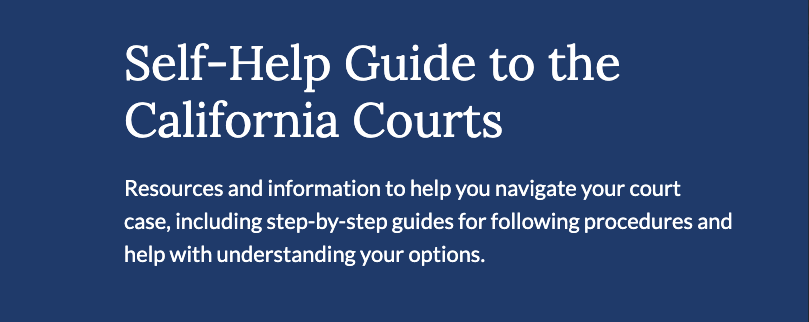Common Questions About the Divorce Process
Written by: Janet O’Neal, CA Certified Paralegal
1. How long does it take to get a divorce?
The timeline for a divorce varies depending on the complexity of the case and whether both parties agree on major issues. In California, the mandatory waiting period is six months from the date the respondent is served. However, contested divorces can take much longer, sometimes years.
Steps to proceed:
- Visit the California Courts Divorce Page for official guidance.
- File the divorce petition (FL-100) and summons (FL-110) with the court.
- Serve the respondent with the documents and file a proof of service (FL-115).
- Follow additional case management instructions from your local court.
2. What are the main steps in the divorce process?
Generally, a divorce follows these steps:
- One spouse files a petition for divorce.
- The other spouse is served with the divorce papers.
- Financial disclosures are exchanged.
- Negotiations occur regarding property, child custody, and support.
- If an agreement is reached, it is submitted to the court for approval.
- If not, the case may go to trial for a judge to decide.
Steps to proceed:
- Use the California Courts Divorce Guide to access forms and timelines.
- Complete financial disclosures (FL-150 and FL-160) and serve them.
- Attend mediation if required by your county.
3. Do I need a lawyer to get a divorce?
No, but legal guidance is strongly recommended, especially if your case involves children, property division, or disputes over spousal support. Many people choose to use a divorce mediator or a paralegal to handle paperwork and reduce costs.
Steps to proceed:
- Utilize the Find Legal Help page to locate attorneys, mediators, and self-help resources.
- Consider filing as a self-represented litigant if your divorce is uncontested.
4. How is property divided in a divorce?
California follows community property laws, meaning that assets and debts acquired during the marriage are generally split 50/50 unless the parties agree otherwise or there are exceptions.
Steps to proceed:
- Review the California Property Division Guide for detailed information.
- Complete the Schedule of Assets and Debts (FL-142) and serve it.
5. What happens if my spouse refuses to sign the divorce papers?
Even if one spouse does not cooperate, the divorce can still proceed. A default judgment can be granted if the other party does not respond within the required timeframe.
Steps to proceed:
- Follow the Default Divorce Process guidelines.
- File a Request to Enter Default (FL-165) if the respondent fails to respond within 30 days.
6. How does child custody get decided?
Custody decisions are based on the child’s best interests. Courts consider factors such as each parent’s relationship with the child, stability, and ability to provide for the child’s needs. Joint custody is common, but sole custody may be awarded in certain situations.
Steps to proceed:
- Visit the California Child Custody Guide.
- Complete and file the Request for Order (FL-300) to request custody orders.
- Attend mediation and court hearings as required.
7. How is child support determined?
Child support is calculated using a statewide formula that considers both parents’ incomes, the time each parent spends with the child, and other financial obligations.
Steps to proceed:
- Use the California Child Support Calculator to estimate payments.
- File a request for child support using form FL-300.
8. Can I modify child custody or support orders?
Yes, modifications can be requested if there is a significant change in circumstances, such as a change in income, relocation, or a shift in the child’s needs.
Steps to proceed:
- File a Request for Order (FL-300) to request modifications.
- Follow modification guidelines from the California Courts.
9. Will I have to pay spousal support (alimony)?
Spousal support depends on factors such as the length of the marriage, the financial situation of each spouse, and their ability to maintain the standard of living established during the marriage.
Steps to proceed:
- Review the California Spousal Support Guide.
- File the necessary forms with the court to request or challenge spousal support.
10. What should I do if my spouse is hiding assets?
If you suspect hidden assets, a forensic accountant or attorney can help uncover undisclosed property.
Steps to proceed:
- File a Motion to Compel Discovery if the spouse is uncooperative.
- Utilize the California Courts Discovery Process.
11. Can I move out of state with my child after a divorce?
Relocating with a child typically requires court approval if the other parent objects.
Steps to proceed:
- File a Request for Order (FL-300) and complete a move-away motion.
- Follow the California Relocation Rules.
12. Do I need to go to court for a divorce?
Not always. Many divorces are resolved through mediation or negotiation.
Steps to proceed:
- Consider using a mediator and review the mediation process.
- If settlement fails, prepare for trial following local court procedures.
For more information or assistance with your divorce process, contact CA Law Docs LLC today!
Business Information:
CA Law Docs LLC
Phone: 833-500-2009

